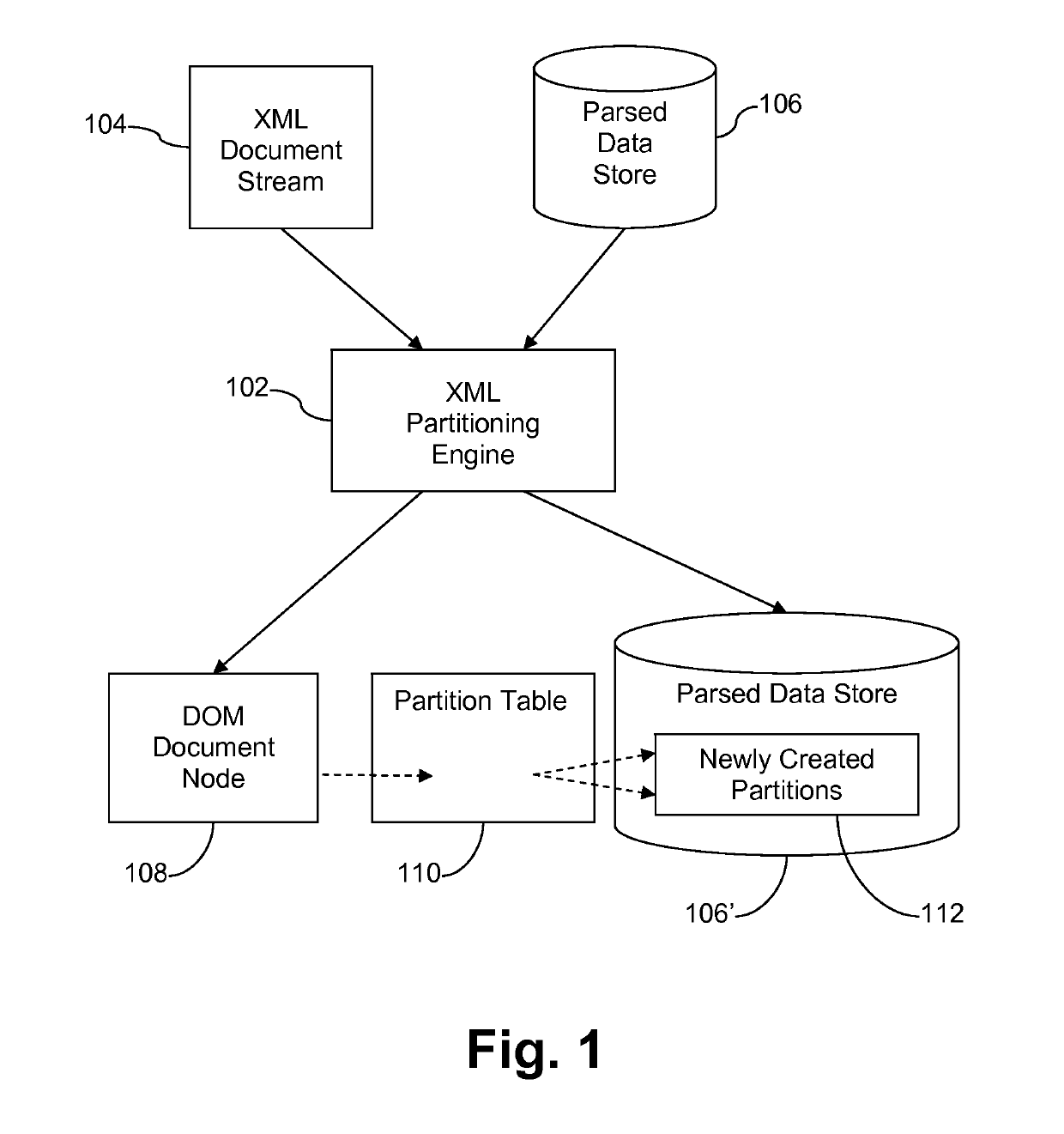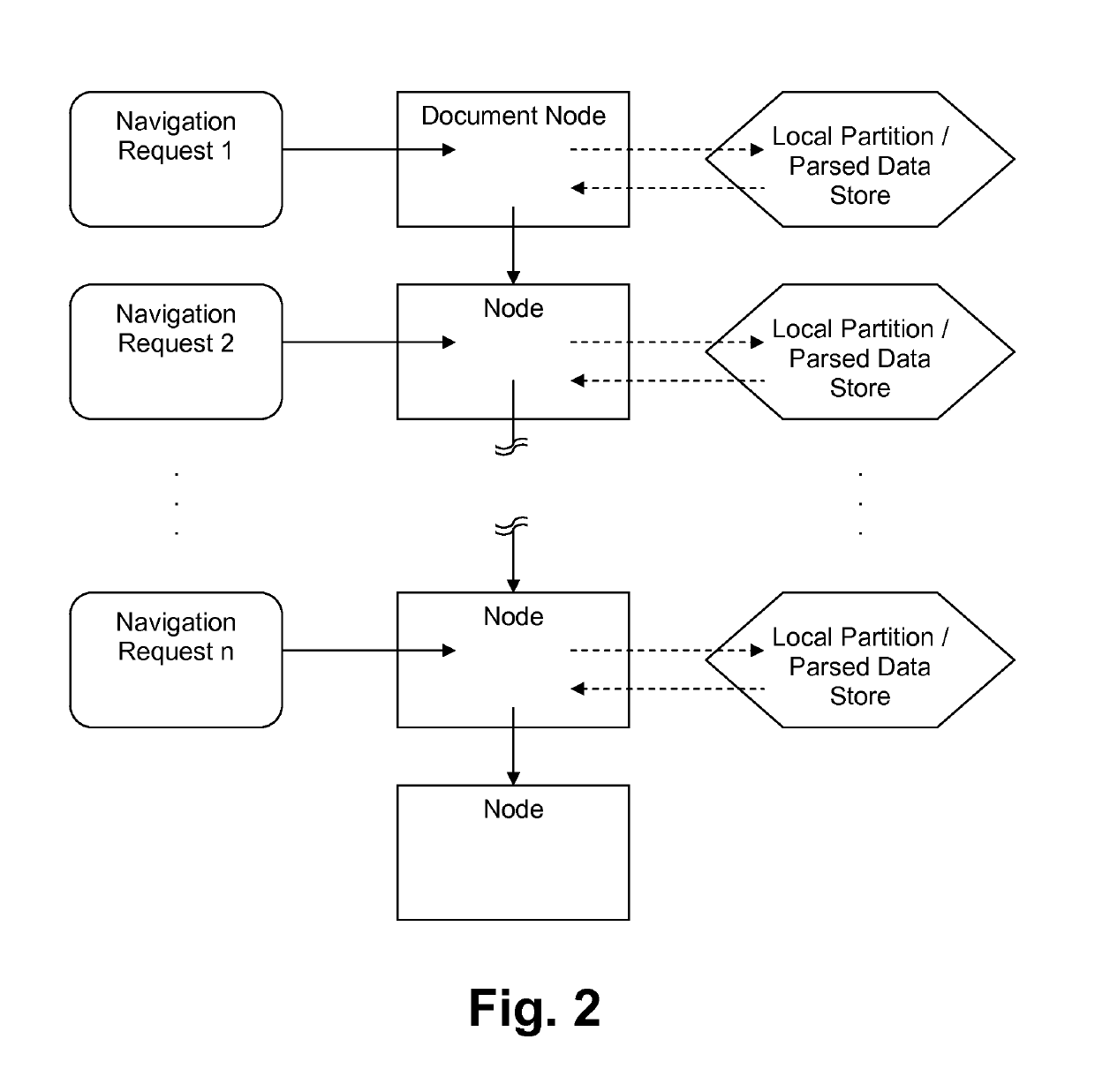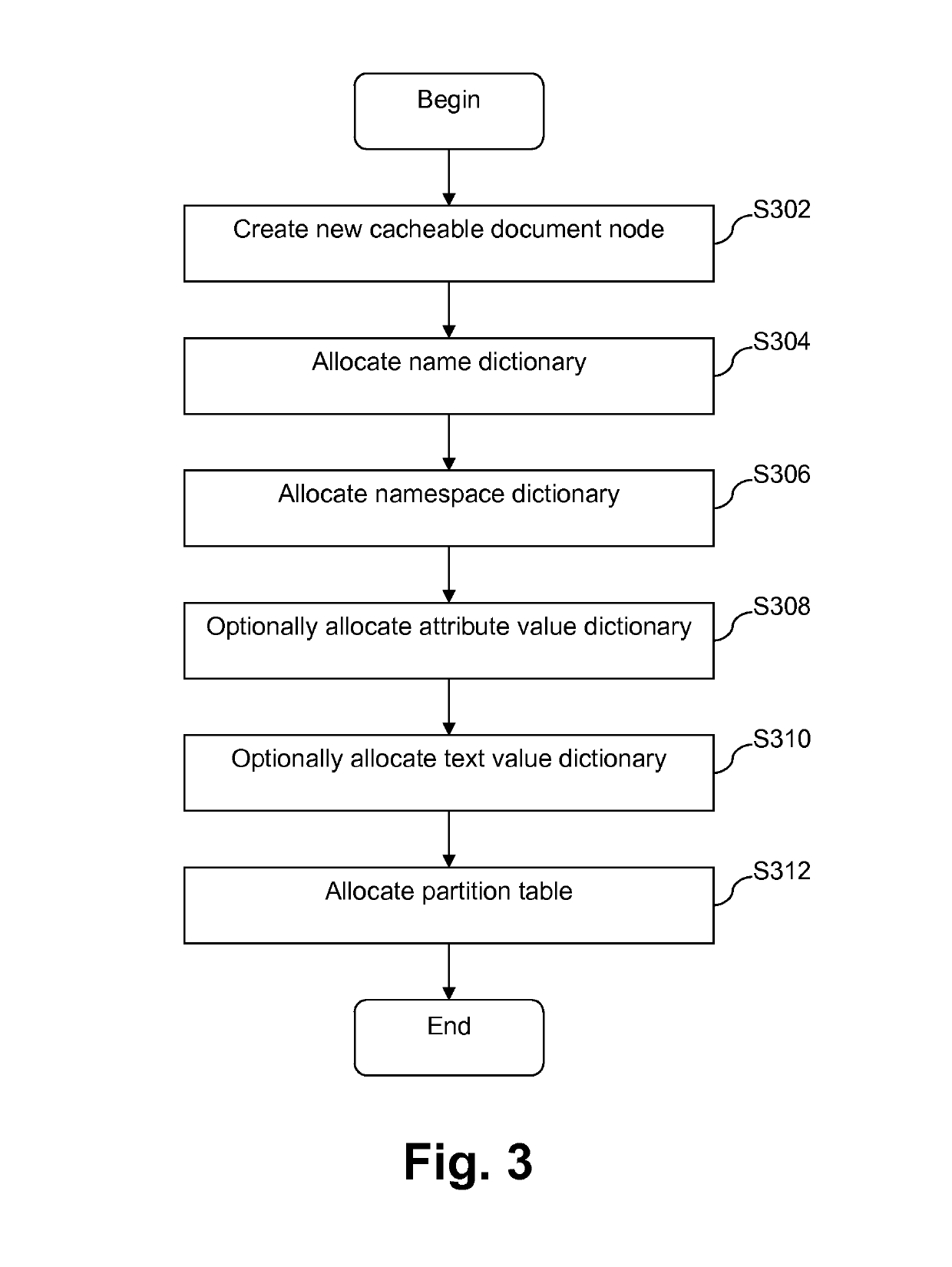Systems and/or methods for delayed encoding of XML information sets
a technology of information sets and systems, applied in the field of xml documents, can solve the problems of high virtual memory demand, cumbersome handling of large documents in this way, and the entire object model must reside in memory
- Summary
- Abstract
- Description
- Claims
- Application Information
AI Technical Summary
Benefits of technology
Problems solved by technology
Method used
Image
Examples
Embodiment Construction
[0044]Certain example embodiments relate to DOM implementations that improve large XML documents processing. The techniques of certain example embodiments do not create the entire object model. Instead, they may completely parse the XML document, storing the parsed data and some metadata in multiple independent blocks, hereafter referred to as partitions. The techniques of certain example embodiments may, in addition or in the alternative, instantiate (e.g., create) only the particular DOM object requested by a program. Employing these techniques alone and / or in combination advantageously reduces the number of memory-resident structures needed to represent an XML document, thereby making it possible to efficiently process very large documents without consuming large amounts of memory.
[0045]It will be appreciated, then, that certain example embodiments involve the pre-parsing of an XML document into independent partitions that include the parsed data for the XML document, without nec...
PUM
 Login to View More
Login to View More Abstract
Description
Claims
Application Information
 Login to View More
Login to View More - R&D
- Intellectual Property
- Life Sciences
- Materials
- Tech Scout
- Unparalleled Data Quality
- Higher Quality Content
- 60% Fewer Hallucinations
Browse by: Latest US Patents, China's latest patents, Technical Efficacy Thesaurus, Application Domain, Technology Topic, Popular Technical Reports.
© 2025 PatSnap. All rights reserved.Legal|Privacy policy|Modern Slavery Act Transparency Statement|Sitemap|About US| Contact US: help@patsnap.com



